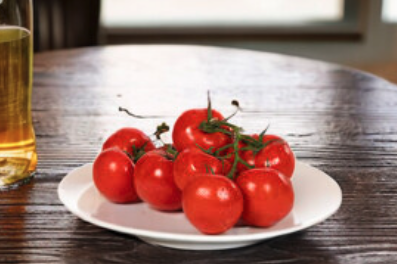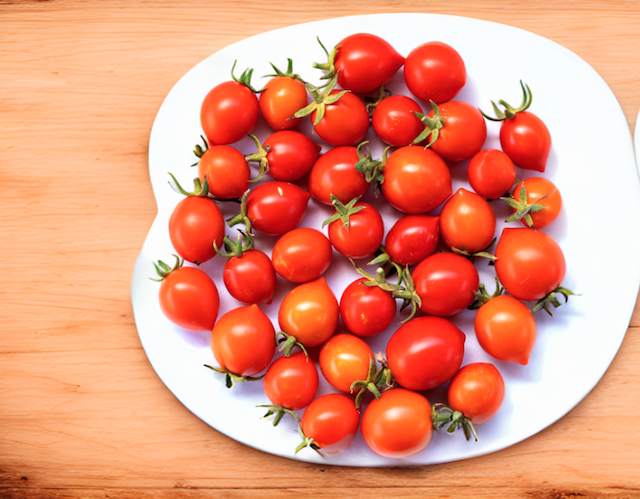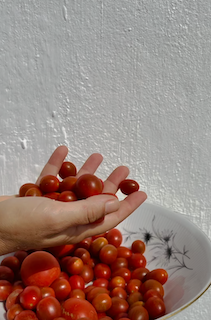A little history of tomatoes
The tomato was introduced to Europe by the Spanish conquistadores in the early 16th century after the capture of the city of Tenochtitlan by Hernán Cortés in 1521. The tomato’s arrival in Europe led to a complex process of cultural assimilation, as it initially lacked a clear cultural identity and was not widely recognized as a food product. The earliest known mention of the tomato in Europe is attributed to the Italian scholar Pietro Andrea Mattioli in 1544. Despite its slow start, the tomato eventually became a central feature of European dining tables and a major dietary source of nutrients. The earliest tomatoes introduced to Europe came in a wide variety of colors, shapes, and sizes, and they were initially grown in Mediterranean climates. The tomato’s incorporation into the European diet began in the late 17th or early 18th century, and it was not widely consumed until the 18th century, mainly in the Mediterranean region. Today, tomatoes are one of the most widely cultivated and consumed vegetables globally, with over 1700 varieties grown around the world
Xitomatl, love, and gold
Tomatoes, scientifically known as Solanum lycopersicum, are not fruits but berries with a plethora of varieties that differ in several aspects. These aspects include their growth cycle, plant development, berry arrangement and size, color, skin texture (smooth or ribbed), and shape.
Here, we introduce nine notable varieties of tomatoes and its Italian name:
Ramato
Also known as the cluster tomato, Ramato is popular for its ease of cultivation, good yield, and disease resistance. The berry is spherical with a bright red, smooth skin. Its flesh is sweetly tart and juicy, divided into compartments that hold the seeds. Ramato is versatile, suitable for both raw and cooked dishes.

Pizzutello
This Campania region specialty is recognized for its pointed tip. It thrives even with minimal water, producing firm, sweetly tart flesh. Pizzutello is excellent in salads, sauces, and conserves, and the variety from the Erice valleys in Sicily is a Slow Food presidium.

Giallo
Originally, tomatoes were yellow, and this variety has recently regained popularity. Giallo tomatoes have a delicate flavor, less tart than red varieties, and are best enjoyed raw, although they are also suitable for cooking.
Any Tomato Family Recipes?
You know us, you know how much we love to search for old recipes or secret family recipes, if you have the pleasure to learn about ours or compare and share your own we are waiting for you at our online cooking classes, contacted to make a beautiful tomato class
San Marzano
The San Marzano, with Protected Designation of Origin (PDO) status, is cultivated in the Sarno-Nocerino area. Maybe is the most popular tomato because Pizza. It is red, meaty, with few seeds, and has an elongated, pear-shaped form that should not exceed 6-8 cm to meet PDO standards. It is perfect for preserves and peeled tomatoes.
Pachino
Pachino is a Protected Geographical Indication (PGI) label that includes four types, including the famous cherry tomato. Cultivated in Sicily around Pachino and other areas, it has firm, very sweet flesh, ideal for raw consumption or cooked, such as on pizza.
Cuore di Bue
This large variety, averaging 300 grams and heart-shaped, has firm flesh with very few seeds. It is unbeatable in salads and pairs well with mozzarella and basil. Cuore di Bue is also easy to grow on a sunny balcony.
Camone
A Sardinian variety, also grown in parts of Sicily, Camone is small, round, and dark red with green stripes on top. Its flesh is crunchy with a distinctive savory and mineral note that stands out against the sweet-tart flavor.
Costoluto
Costoluto refers to a type that includes a wide range of cultivars, such as Marinda. It has a flattened shape and deeply grooved surface starting from the stem. The flesh is firm, and the flavor is robust with a salty note. It is best enjoyed raw.
Zebrato
Zebrato is a result of crossbreeding different cultivars, mainly for aesthetic appeal rather than flavor. There are many varieties on the market, including green with yellow stripes, black with red stripes, and yellow with white stripes, all of which are excellent in salads. This concise guide offers a snapshot of the diverse and flavorful world of tomatoes, each with its unique characteristics and culinary uses.

